PANAMA CITY - “Gringo, gringo.” At first I can’t tell where the words are coming from but being the only fair-haired, blue-eyed “gringo” in sight, I know they’re being directed at me.
So I spin around trying to locate the speaker and catch sight of a lovely round-faced woman standing over a hot grill who is smiling directly at me.
I point at myself and the woman behind a sign which reads “hotdog y chighas” nods yes. Then she asks in Spanish if I’d like a hot dog.
It’s 6:30 a.m.
“The hot dog is the breakfast food of Panama,” Ernesto, the man who is showing me around this sprawling Latin American metropolis, tells me. “And over there, that food cart is selling bacon sandwiches — we Panamanians like meat in the morning.”
Although it’s early, the streets of Panama’s capital are alive with people and traffic.
The Policia Nacional have set up a speed trap down the street from where Ernesto picks me up. Their pickup patrol truck is packed with handcuffed traffic violators about to be carted off to jail. They take running red lights seriously in this town.
As we pile into Ernesto’s van, I see an army of colourful diesel-belching school buses pass by.
“They are our public transportation and public enemy No. 1,” Ernesto says. “All the buses here are privately owned and the drivers art them up. Locally they are known as the ‘Red Devils’ because they cause so many accidents. But soon they will be gone — replaced by the new subway we are building in Panama City.”
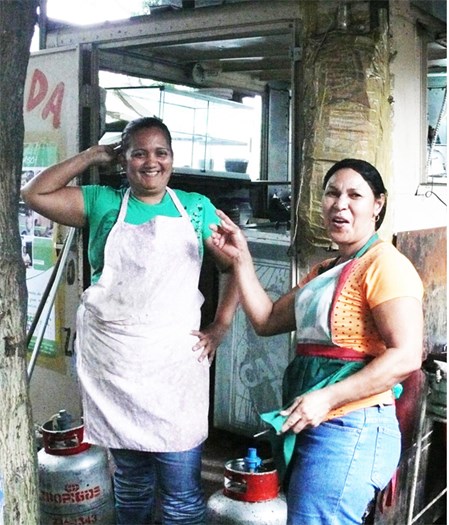
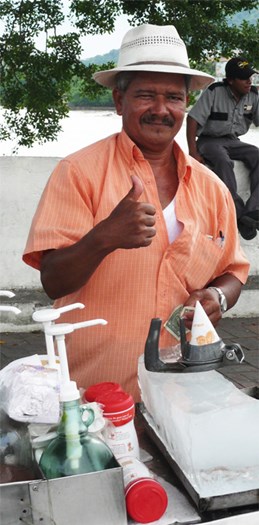
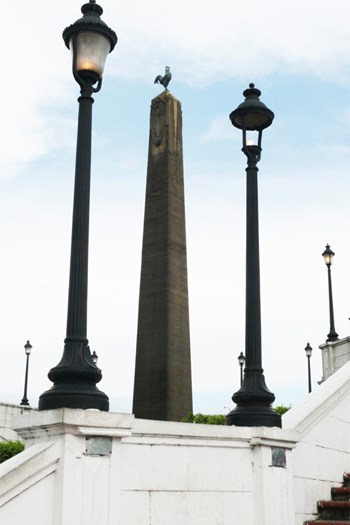
Left: Street vendors love to play with tourists. Middle: Frozen ice on a hot day. Right: Monument from the past.
A new subway is not the only thing being built in Panama’s vibrant capital. Flying into the city from the Pacific Ocean side, one cannot but be impressed by the modern skyline that greets visitors.
Since taking control of the Panama Canal from the United States in 1999, this country’s capital has been a sponge for new investment, most being supplied by mining, financial and insurance companies. Those firms abandoned Panama during the dreaded Manuel Noriega era that ended when a U.S. invasion ousted the military dictator (and brought him to justice in Miami on drug charges) in 1989.
Panama City has been in building boom mode ever since — the city’s lovely Pacific Ocean shoreline reminds me of a mini-Hong Kong.
“That’s our new Donald Trump Hotel over there,” says Ernesto pointing to a sail-shaped building which now houses the exclusive Trump Ocean Club International Hotel on Panama City’s chic Punta Pacifica Peninsula.
Dozens of other new high-rise condos and office towers have turned the capital into a vertical metropolis and one of the most prosperous cities in Latin America.
Panama City has also become a major tourist haven thanks to its year-round tropical climate and isolation from hurricanes. In recent years, the city has been attracting lots of Canadian and American retirees, as well.
“Condos are very cheap here — you pay $140,000 U.S. for one with an ocean view,” says Ernesto. “And we have good hospitals here — Panama’s a very good place to live.”
But as impressive as Panama City’s modern skyline is, it’s the city’s Casco Antiguo (Old Town) that Ernesto is eager to show me. As we drive along the Pacific Ocean shoreline where million-dollar yachts are moored in brand new marinas built next to statue-filled parks, the guide tells me the “new city is our heart but Casco Antiguo, (a UNESCO World Heritage Site), is our soul.”
The Old Town’s red-roofed colonial buildings are now in sight and so too are a lot of shops displaying signs with Chinese lettering.
I’m puzzled.
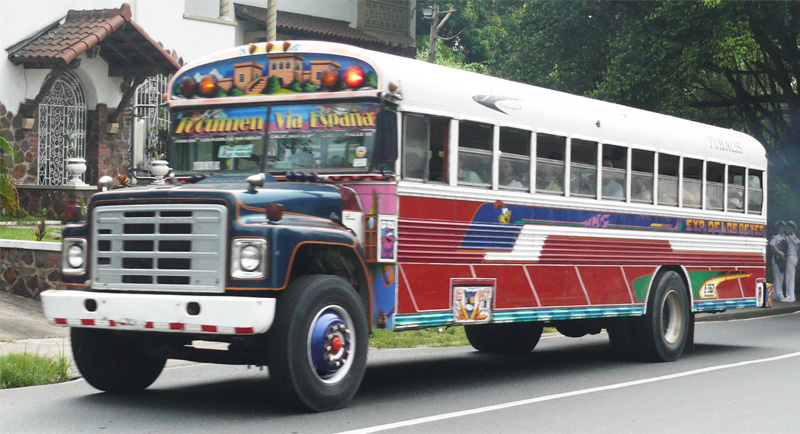
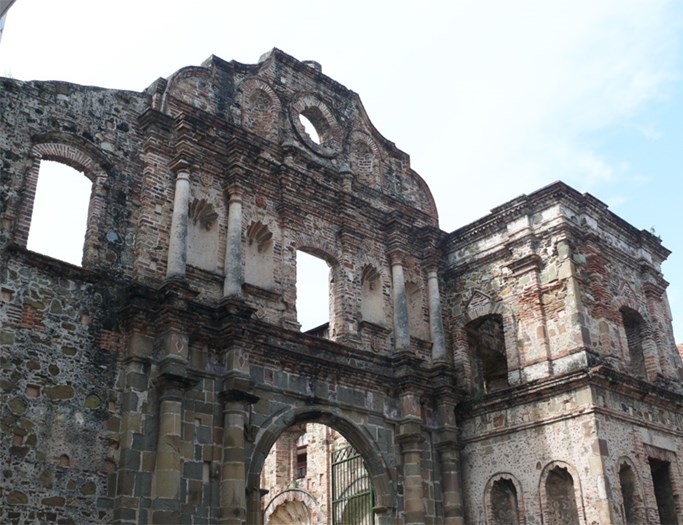
Left: Buses are a real attraction. Right: Ruins from a bygone era.
“We have one of the biggest Chinatowns anywhere. Chinese labourers were brought to Panama to help build the canal and they never left,” explains Ernesto, who quickly adds, “once you’ve lived in paradise, you can never leave.”
There are more than 160,000 Chinese living in Panama City, which offers one of the most diverse populations in the world, thanks primarily to the canal’s international draw. That’s given Panama City a unique culinary and entertainment scene that’s the envy of its Latin American neighbours.
The wide ocean-side boulevards we were travelling along have now been replaced by narrow one-lane streets as Ernesto enters the Old Town and pulls up in front of stately Iglesia of San Jose on Avenida A. The handsome cathedral, also known as the Church of the Golden Altar, is one of the city’s most revered landmarks.
“I just love this church,” says an impassioned Ernesto.
As you enter the church, it’s easy to see why this structure holds such prominence with Panamanians — our eyes are immediately drawn to an ornate golden altar carved with angels and saints. It’s absolutely breathtaking.
“When the English pirate Henry Morgan attacked the Old Town 300 years ago and was burning and looting everything in sight, a priest was insightful enough to cover the Golden Altar in black tar and the pirate missed the greatest treasure in our city,” says a thankful Ernesto.
Standing outside the church, I notice many of the historic buildings gathered along Avenida A and the sidestreets leading off it are covered in scaffolding — since Casco Antiguo was given UNESCO World Heritage Site recognition, Panama has been using its newfound canal riches to spruce up much of its past.
We decide the walk through the compact Old Town, which has experienced a dramatic rebirth in recent years — foreign and Panamanian elite have moved into the restored buildings and the area is now full of chic restaurants and boutique hotels.
The handsome three- and four-storey buildings we come upon, their balconies wrapped in wrought-iron railings, give the Old Town a distinct New Orleans feel. And just like New Orleans, jazz is king here — Panama City hosts its own world-renowned jazz festival every January.
Suddenly, a reminder of Panama’s ancient past is blocking our route — we’ve come upon two native women dressed in traditional garb who are out for a walk.
“There are 11 native tribes in Panama,” says Ernesto, “and many of the native people have moved into the city.”
Everywhere I look, there are parks and squares — some big, others quaint — where people gather to engage in casual conversation or to enjoy the tropical splendour that abounds in this part of town.
One of the loveliest squares in the Old Town is Plaza Bolivar, named after the South American leader Simon Bolivar. Better known as El Libertador (The Liberator), Bolivar is revered here because he secured Latin America’s independence from Spain.
The elegant square is a fitting tribute to his feat — it’s dominated by a huge statue dedicated to Bolivar’s failed attempt at uniting all of Latin America, and features the Teatro Nacional, where the country’s major theatrical performances are held. Built in 1908 and lovingly restored in 1974, the theatre’s ornate ceiling is stunning and showcases fabulous frescos.
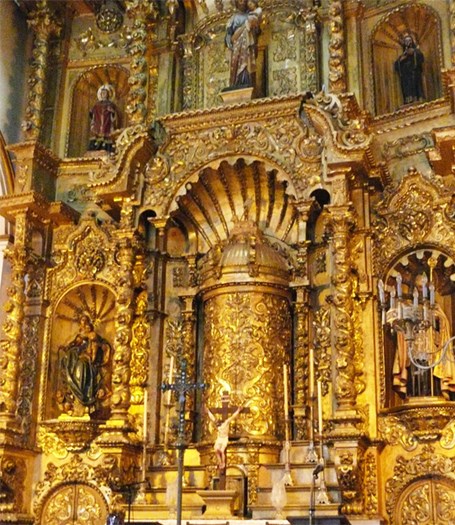
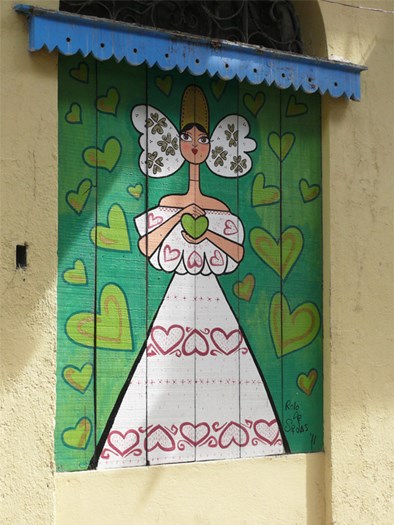
Left: Panama Right: Colourful doors in the Old Town.
Other beautiful squares we see on our walk include:
• Plaza de la Independencia: This is dedicated to the founding fathers of Panama, who declared their independence from Colombia in 1903. The most impressive feature of this square is the Catedral de Nuestra Senora de la Asuncion, which casts a giant shadow over the beautiful plaza. The cathedral dates back to 1688 and took more than 100 years to complete. The great church’s towers are inlaid with mother of pearl from the Perlas Islands.
Off to one side stands the Museo del Canal Interoceanico, which traces the construction of the Panama Canal right back to a first attempt by the French in the late 1800s.
• Plaza Herrera: This lively square is dedicated to General Tomas Herrera, who achieved Panama’s independence from neighbouring Colombia through battle. The square suffered extensive damage in a 1781 fire that destroyed most of the Old Town and was, until 1887, used as a bull fighting ring.
By the time we reach the Plaza de Francia, Ernesto insists I sample a flavoured ice cone to cool me down. As I wait for the vendor to scrap shards of ice into a paper cup and then top it with sugary syrup, I scan the majestic square that commemorates France’s failed attempt at canal-building.
The plaza, not far from the French Embassy, is dominated by a large obelisk topped with a rooster which honours French workers who died during the first attempt to link the Pacific and Atlantic oceans.
The monument is surrounded by a sea wall that housed the city’s defence garrison until the beginning of the 20th century. The vaults, or bovedas, of the massive wall, which give the area its name, Las Bovedas, were once used as barracks and prison cells.
Ernesto tells me there are stories about the infamous prison where inmates were chained outside the dungeons during low tide and left there to face high tide.
“Tides can vary as much as 17 feet here,” says a wide-eyed Ernesto, who leads me up a semi-circular staircase to the top of the seawall, where we can see modern Panama City directly in front of us.
“My new city is very beautiful, no?” Ernesto comments.
Panama City’s new skyline is indeed impressive, but looking back to the Old Town, I realize the real beauty of this prosperous Latin American city lies behind us in the Casco Antiguo.
Information
Safety: Like any Latin American city, safety is a concern but the drug problems that Panama endured during the Noriega period have all been cleaned up and going out at night is quite safe.
Shopping: Because of the worldly goods shipped through the canal, Panama has become a duty free shopping haven and has set up a “free zone” area – about an hour’s drive from downtown Panama City – where goods can be bought for a fraction of the price charged elsewhere.
Caution: Never flag a taxi on the street – restaurants and clubs are only too happy to call a cab for you.
Tours: The Panama Canal, the Old Town and ancient Panama, whose ruins are being lovingly restored in sight of modern skyscrapers, are all must tours in Panama City.
Getting there: Now that Copa Airlines is offering four flights from Toronto weekly, you have no excuse not to visit this up and coming vacation destination. Go to www.copaair.com for schedules and pricing.